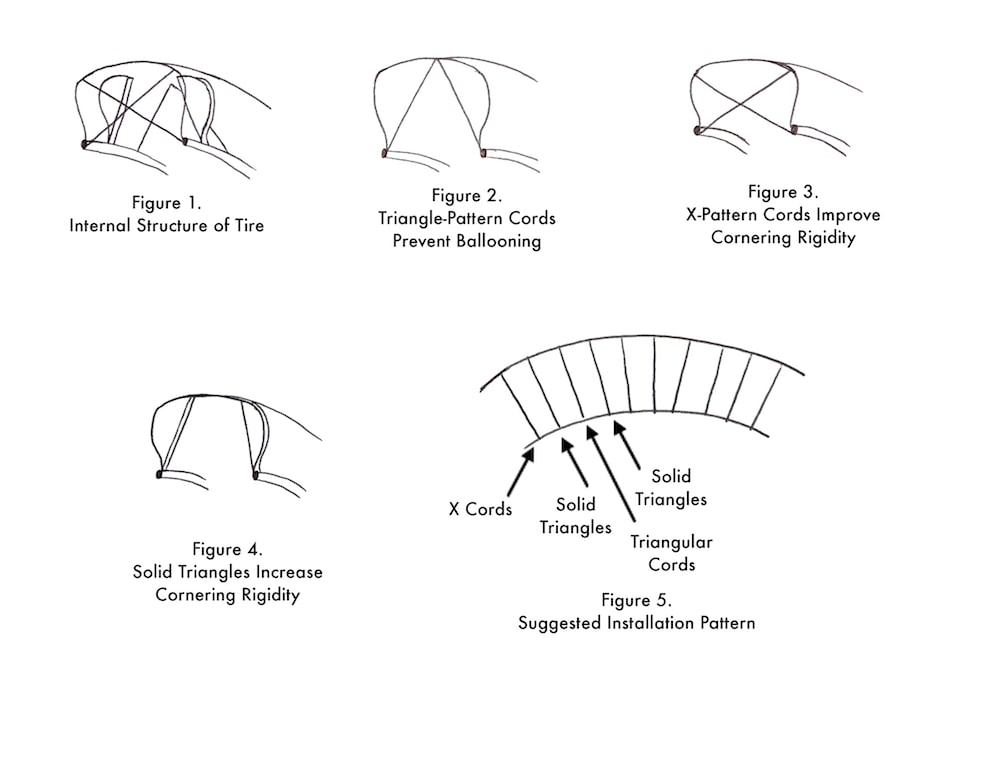Tires are perhaps the most important part of a car. No matter what lies above, all the driver's inputs must go through these contacts with the ground. The following design will improve vehicles’ performance by improving the tires. Cars using these tires will also gain better fuel economy because the tires’ increased rigidity will cause lower rolling resistance.
This modified pneumatic tire design features key improvements to performance while maintaining compatibility with the millions of wheels on older vehicles on the road, thus minimizing expense and obstacles to adopting the new design. If needed for extreme performance applications, wheels with bead-locks can be used to keep the tires firmly attached.
The shell of this tire is almost identical to current pneumatic tires, with regular sidewalls and treads; however, internal improvements enhance performance.
As shown in Figures 1-3, internal cords connect the beads of each tire to the opposite tire shoulder (X-pattern) and center of the tire (triangle-pattern) to promote rigidity and prevent ballooning, especially at high speed. Additionally, solid triangular blocks (Figure 4) are placed at both shoulders of the tire — the sites of maximal load — to enhance rigidity of the outside of the tire under cornering. These reinforcements are placed in an alternating pattern as shown in Figure 5.
The triangular-pattern internal cords increase the maximum permissible speed of the tire by preventing the center of the tread from ballooning at high speeds. They also allow a wider tire without ballooning issues at any given speed. These cords are flexible, with steel or synthetic tire cord being the most likely materials, so the tire still handles well over any bumps or road imperfections.
The X-pattern internal cords can be standard tire cords to allow flexibility while providing some added rigidity, or they can be optimized for performance by making them out of a semirigid material such as cord-reinforced rubber, resin, or composite. Using stiff composites would transfer cornering force from the outside shoulder to the inside bead of the tire, causing increased cornering rigidity and performance.
The triangular blocks are spaced to retain tire flexibility; they can be placed (like the treads) at slightly varying distances to minimize harmonic impact or spaced evenly for maximum consistency. They could be made of tough rubber, possibly with cord reinforcements; other materials such as a flexible resin or composite could provide a more lightweight reinforcement. While the triangular blocks are shown oriented vertically and spanning the full height of the sidewall in Figure 4, their height and angle may be tuned for optimal performance.
Together, these key tire design modifications enhance structural rigidity to maximize performance; as an added benefit, they lower rolling resistance to increase fuel economy. With a slight redesign, such as making all the internal structures semirigid to bear the weight of the car, these tires could likely also be adapted into airless tires — a further attractive possibility.
Like this entry?
-
About the Entrant
- Name:John Krishnan Myjak
- Type of entry:individual
- Patent status:none

